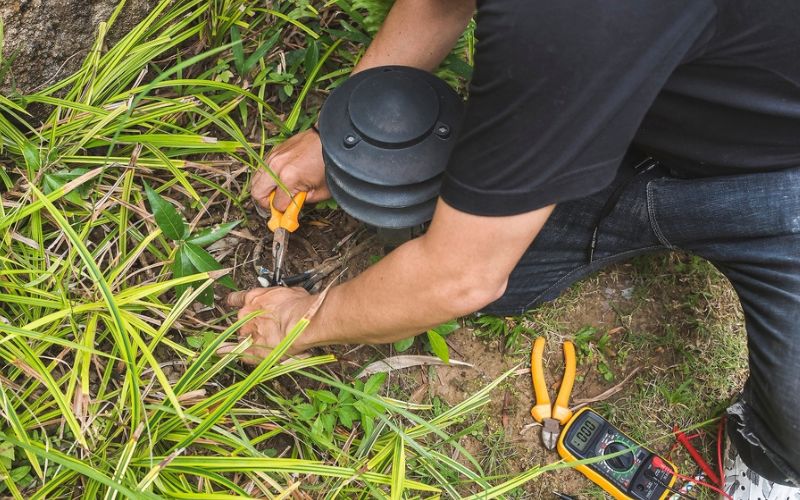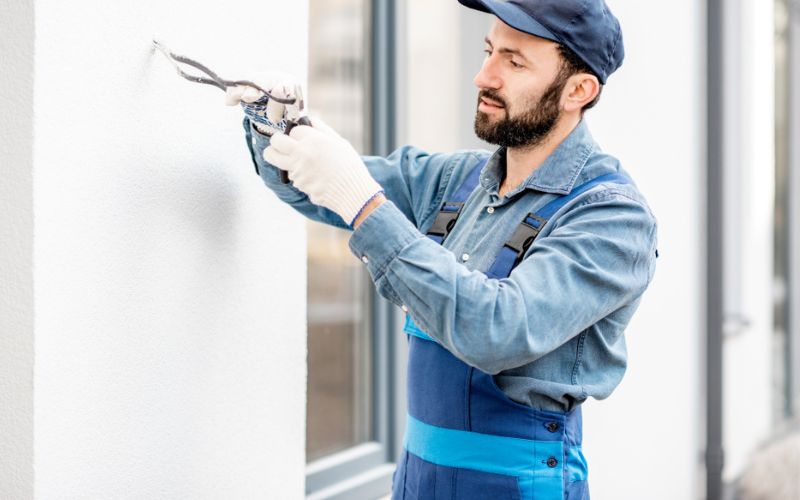
As a Canadian homeowner, you might have come across a puzzling scenario when installing or replacing an outdoor light fixture: four wires protruding from the wall instead of the expected three. This situation can be perplexing, especially if you’re accustomed to the standard black (live), white (neutral), and green (ground) wires. So, what’s the purpose of this fourth wire, and how should you handle it? Let’s delve into the intricacies of outdoor lighting wiring to shed some light on this matter.
The Standard Three-Wire System
In a typical Canadian residential electrical setup, you’ll find three wires: the live wire (black), the neutral wire (white), and the ground wire (green or copper). The live wire carries the electrical current from the power source to the fixture, the neutral wire provides a return path for the current, and the ground wire is a safety measure that helps prevent electrical shocks if a fault occurs in the wiring.
The Mystery of the Fourth Wire
In some outdoor lighting setups, you might encounter a fourth wire. This wire, often red or blue, is typically a secondary live wire, also known as a ‘switched live’ wire. It’s used in more complex lighting systems that include features like motion sensors, timers, or smart controls that need a constant power supply, separate from the main light that you control with the switch.

The Role of the Fourth Wire
The fourth wire in your outdoor light fixture is there to provide continuous power to these additional features, even when the light is off. For instance, if your outdoor light has a built-in motion sensor, the sensor needs to stay active all the time to detect movement. In this case, the standard live wire powers the sensor, and the fourth wire, the switched live wire, controls the light. When the sensor detects movement, it activates the switched live wire, turning on the light.
Wiring Your Outdoor Light with Four Wires
When wiring your outdoor light, it’s crucial to connect the wires correctly. The fourth wire, if present, should be connected according to the light fixture’s manual. If the fixture doesn’t require a fourth wire, you can cap it with a wire nut and leave it in the junction box. However, if you’re unsure about the wiring, it’s always best to consult with a professional electrician to ensure a safe and correct installation.
Troubleshooting a Four-Wire System
If you’ve wired everything correctly but the light isn’t working, there are a few things you can check. First, ensure that the light switch is on and that the bulb is in good condition. If the light is still not working, use a multimeter to check if there’s power in the wires. If there’s no power, the issue might be with the circuit breaker or the wiring in your house. In this case, it’s advisable to call an electrician.
The Benefits of a Four-Wire System in Outdoor Lighting
Enhanced Security Incorporate motion sensors to detect movement and activate the lights, improving safety and deterring intruders.
Energy Efficiency Use timers to automate lighting schedules, conserve energy, and reduce electricity costs.
Convenience and Automation Control outdoor lights remotely through smart controls and home automation systems, adjusting brightness and setting schedules with ease.
Customization and Versatility Expand lighting functionality by integrating additional accessories and creating unique lighting scenarios tailored to your preferences.
Aesthetic Appeal Create visually appealing lighting designs with dimmers and color-changing bulbs, highlighting architectural elements and enhancing outdoor decor.

Safety Considerations
When working with electricity, prioritizing safety is crucial. Here are some key safety considerations to keep in mind when dealing with your home’s electrical system and a four-wire setup:
Turn off the power Always switch off the circuit breaker controlling the area or fixture you’re working on to eliminate the risk of electric shock.
Use proper tools Utilize insulated screwdrivers, wire strippers, and pliers designed for electrical work to minimize accidents and prevent damage to the wiring.
Wear protective gear Protect yourself with insulated gloves and safety goggles to reduce the potential for electrical hazards while handling live wires or working near electrical components.
Consult a professional electrician Seek assistance from a qualified electrician for complex wiring tasks or if you’re uncertain about any aspect of the process. They have the expertise to ensure safe installations and compliance with local electrical codes.
Regular maintenance Conduct routine inspections of your outdoor lighting system to identify signs of wear, damage, or loose connections. Promptly address any abnormalities by contacting a professional electrician for thorough inspections and necessary repairs.
Conclusion
In conclusion, the presence of a fourth wire in your outdoor light fixture may initially appear perplexing, but it serves an important purpose in enabling advanced lighting features. By understanding the function of each wire and following proper wiring procedures, you can create a safe and efficient outdoor lighting system. Emphasize safety at all times, and consider consulting a professional.
Colin Macmillan is a seasoned entrepreneur and the CEO of Riverwood Landscape, a leading landscaping company based in Canada. He has been at the helm of the company since leaving high school, demonstrating his strong leadership skills and business acumen.
Colin’s expertise lies in various aspects of landscaping, including lawn care, interlocking, sod installation, and commercial maintenance. His hands-on approach and dedication to the craft have been instrumental in building Riverwood Landscape into a reputable brand.
One of his most notable achievements is the creation of a successful landscape franchise that services multiple locations. This accomplishment underscores his strategic thinking and ability to scale operations effectively.
Colin has also had the privilege of working with Guelph Hospital for landscaping and maintenance, a testament to the trust and reliability that his company has earned over the years.
His professional mission is to offer the best services and experiences for customers, a goal that he tirelessly pursues. Colin’s commitment to excellence and customer satisfaction continues to drive the growth and success of Riverwood Landscape.








